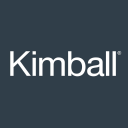/ factorpad.com / stocks / f26xqg.html
An ad-free and cookie-free website.
Our quantitative data points are meant to provide a high-level understanding of factors in equity risk models for Kimball International-B. Portfolio managers use these models to forecast risk, optimize portfolios and review performance.
We show how KBAL stock compares to 2,000+ US-based stocks, and to peers in the Manufacturing sector and Wood Office Furniture Manufacturing industry.
Please do not consider this data as investment advice. Data is downloaded from sources we deem reliable, but errors may occur.
 For 70 years, Kimball International has created design driven furnishings that have helped our customers shape spaces into places, bringing possibility to life by enabling collaboration, discovery, wellness and relaxation. The Company goes to market through our family of brands: Kimball, National, Interwoven, Etc., Kimball Hospitality, D'style by Kimball Hospitality and Poppin. The Company values and high integrity are demonstrated daily by living our Purpose and Guiding Principles that establish it as an employer of choice. The Company builds success by growing long-term relationships with customers, employees, suppliers, shareholders and the communities in which we operate. In fiscal year 2020, the company generated $728 million in revenue and employed over 2,800 people.
For 70 years, Kimball International has created design driven furnishings that have helped our customers shape spaces into places, bringing possibility to life by enabling collaboration, discovery, wellness and relaxation. The Company goes to market through our family of brands: Kimball, National, Interwoven, Etc., Kimball Hospitality, D'style by Kimball Hospitality and Poppin. The Company values and high integrity are demonstrated daily by living our Purpose and Guiding Principles that establish it as an employer of choice. The Company builds success by growing long-term relationships with customers, employees, suppliers, shareholders and the communities in which we operate. In fiscal year 2020, the company generated $728 million in revenue and employed over 2,800 people.
Many of the following risk metrics are standardized and transformed into quantitative factors in institutional-level risk models.
Rankings below represent percentiles from 1 to 100, with 1 being the lowest rating of risk.
Stocks with higher beta exhibit higher sensitivity to the ups and downs in the market. (↑↑)
Stocks with higher market capitalization often have lower risk. (↑↓)
Higher average daily dollar volume over the past 30 days implies lower liquidity risk. (↑↓)
Higher price momentum stocks, aka recent winners, equate to lower risk for many investors. (↑↓)
Style risk factors often include measures of profitability and payout levels.
Companies with higher earnings generally provide lower risk. (↑↓)
Companies with higher dividend yields, if sustaintable, are perceived to have lower risk. (↑↓)
/ factorpad.com / stocks / f26xqg.html
A newly-updated free resource. Connect and refer a friend today.